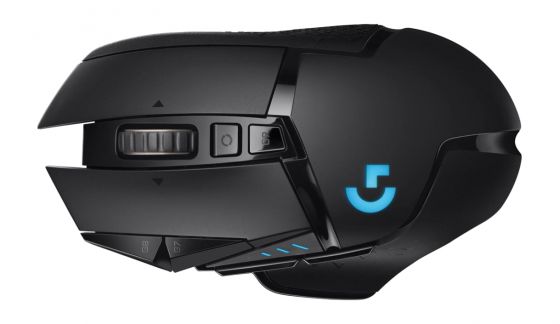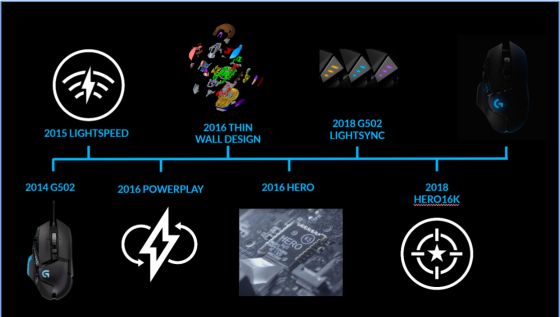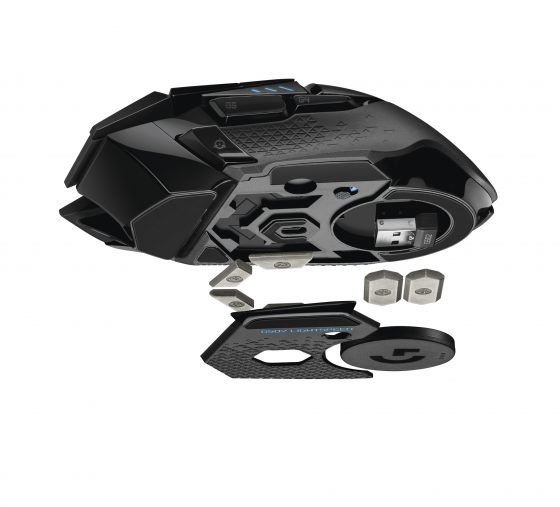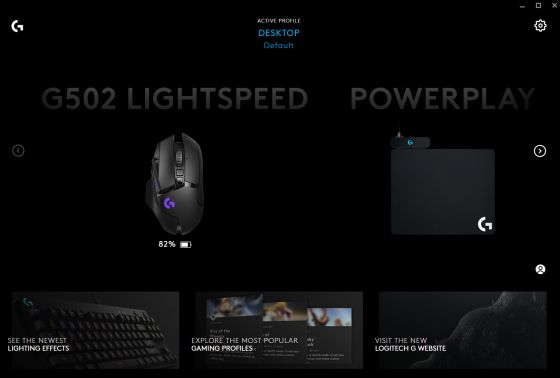With every new advancement in technology, Logitech finds a way to enhance its flagship products. First developed in 2014, the Logitech G502 has been one of the company’s most popular gaming mice and it recently received a much-needed facelift.
The original G502, with its DPI Shift functionality and highly-accurate sensor, was actually the mouse swayed me to start using Logitech products over another certain peripheral company that won’t be mentioned. This made me even more excited to check out the update to an old favorite.
Old Dog, New Tricks
While it sported a revolutionary design and customization back in 2014, Logitech has advanced its technologies in a way that made the G502 seem lacking… until now. The recent updated included an upgrade to the base model with the 16k HERO sensor while a second model was released that added in the Lightspeed wireless technology and Powerplay support.
In addition to enhanced technology, the foundation of the G502 was rebuilt to minimize weight without compromising form or function. The new model leveraged an endoskeleton and PCB design to decrease the overall weight without reducing durability. For those who still prefer a heavier model, the G502 comes with a set of weights for added customization.
For those unfamiliar with the original G502, it still comes standard with all of the old options and some new ones such as: 11 programmable buttons, mechanical spring button tensioning, hyper scroll wheel, and a DPI Shift button that allows players to temporarily change their DPI setting on the fly. The latter was the trademark of the G502 and an excellent tactic for snipers.
Top of the Line
As a PC gamer for more than two decades, I’ve gone through a lot of mice with various styles and from many different companies. The Logitech G502 is objectively one of the highest quality products on the market. Similar to the other Logitech G products that use the HERO 16k sensor, the G502 is incredibly accurate from 100 to 16,000 DPI on almost any surface. I tested it with both a cloth and hard polyethylene mousepad, and without a mousepad at all. There’s virtually no difference in performance based on how you want to game, which makes this an excellent product for staying in one spot or gaming on the go.
The other major addition to the G502 is the implementation of wireless ‘Lightspeed’ technology, and there are no compromises here. Having used Lightspeed products since their inception in 2015, I’ve never once had an issue going wireless and the G502 is no different. There’s no lag and the 1ms report rate is just as good as any wired gaming mouse on the market.
Of course, the major drawback to any wireless product is having to deal with charging it or replacing batteries. Thankfully, the G502 is compatible with the Powerplay charging system; as long as it’s sitting on top of a Powerplay mousepad, it will never have to be plugged in. The con is that the charging system is a little pricey at $99.99 for a fancy mousepad, but it’s an investment I seriously recommend to any PC gamer who is sick of tangled cords or having to peripherals run out of juice in the middle of combat.
Software Struggles
It wouldn’t feel right if I didn’t point out the one real flaw with the G502, and unfortunately it has absolutely nothing to do with the actual product. The biggest problem with this mouse is its complete reliance on the G HUB, which is the company's overhaul to the Logitech Gaming Software. The LGS was fairly barebones, but it allowed enough customization to get the job done and deploy some cool lighting effects across all the company’s products.
Logitech G HUB is a completely new program that is now replacing the LGS and offers a lot more options for individual pieces of hardware and allows everything to sync together. Unfortunately, it’s not the most stable piece of software at the moment. When I initially upgraded the G HUB to the build that included the G502, it would constantly crash or simply decide to not recognize certain peripherals.
This was especially frustrating because the G502 wasn’t available on the LGS, so I had to either hope the G HUB would eventually work or just use the default onboard settings. Thankfully, I haven’t had any issues with G HUB in the past couple of weeks, but this also wasn’t my first issue with the software.
My only other complaint regarding the G502 is a personal preference more than anything. For me, the DPI Shift button is placed too far forward and I have to strain to reach it. This is something to keep in mind for anyone with hands on the smaller side who uses a palm grip. It’s not unusable, but it does get uncomfortable in long gaming sessions. This is also something that’s tricky to design because obviously not everyone has the same hand size or uses the same style of grip.
Overall: 9.5/10
When the G502 Proteus Core launched in 2014, it was a huge step up for Logitech with improved functionality and performance. Five years later, it has received the best technological improvements from the company to make it an industry leader once again. If you can afford it, and a Powerplay setup to really get the most out of it, there aren’t many better options on the market. Logitech G502 Lightspeed wireless gaming mouse is currently available for $149.99.
It’s too bad that the only mark against it has nothing to do with the mouse itself; it would be nice if Logitech still supported LGS for those who want a more simple, and stable, software solution.
Pros:
Amazing upgrade to an already good product
Lightspeed wireless and Powerplay charging work perfectly
DPI Shift is still a cool feature
Cons:
Pricey
G HUB can be buggy
Not perfect for small hands



